Clean water is essential for all life on Earth to thrive. The water cycle is not contained within our countries’ borders or boundaries, which makes it a challenge to monitor, maintain and implement improvements and changes. Ownership of, and access to, this essential natural resource has been at the forefront of many disputes around the world, between neighboring countries and communities, and even countries on opposite sides of an ocean. Across the globe we are observing conflicts, wars and water refugees as people struggle for equal access to what has been widely termed Blue Gold.
Economies on both a national and local level depend upon clean freshwater and saltwater regions. In theory, a thriving economy has the ability to fund infrastructure projects and provide basic needs for all of its citizens. However, even wealthy countries are struggling to provide sufficient standards of clean water, with each region negotiating its own bespoke complications.
Earth, on a planetary scale, is not running out of freshwater. However, it’s not all easily accessible to us. Around 97.5%1 of the planet’s water is saltwater which is not suitable for agriculture or drinking. Freshwater makes up the remaining 2.5% of the water on Earth. Around 1.5% of that water is frozen into ice caps and glaciers which leaves the remaining 1% to sustain much of life on Earth. This 1% of water is found in rivers, lakes, ground ice, permafrost and underground aquifers. These are the resources that are being rapidly depleted by humans and are only being replenished by rain and snowfall.
This limited supply isn’t distributed evenly around the world. Some freshwater rich countries such as Brazil, Russia and Canada2 have certain geographical or climatic advantages, although within these countries, water also isn’t distributed evenly which poses management challenges. 70% of Brazil’s freshwater is located in the Amazon Basin3 which is sparsely populated by humans. On the other hand, Brazil’s developed coastline includes cities with large populations, vast agricultural and industrial zones, and a much larger demand. In 2020, 15.8 million Brazilians were affected by droughts.
The areas with the highest level of water stress are predominantly located in the Middle East and North Africa due to these regions’ desert climate and their growing water demand.4 Densely populated cities with high water demands are also struggling. In 2019, the reservoirs that serve the city of Chennai, India nearly ran dry, Cape Town,South Africa nearly reached their ‘Day Zero’ water shut-off in 2018, and in 2017, Rome, Italy was forced to ration water due to ongoing droughts.
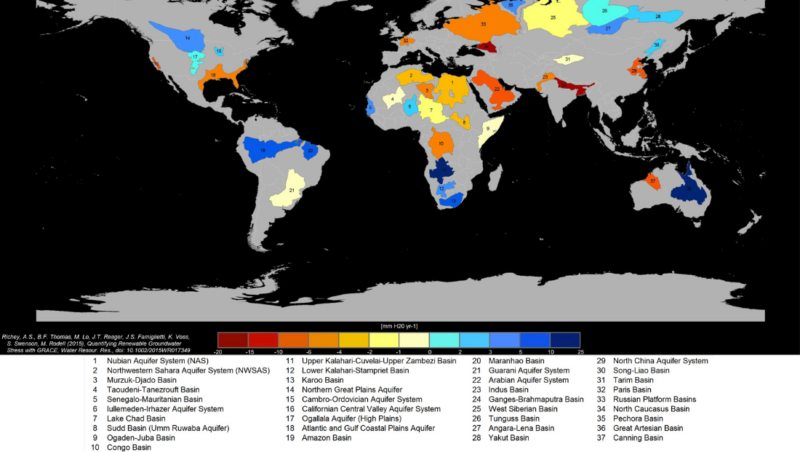
NASA/JPL-Caltech
When surface water supplies are running dry, countries and private companies start pumping underground reserves. Evidence collected between 2002 and 2017, from a joint investigation between NASA and German space agency DLR, show that of Earth’s 37 largest aquifers, 21 have exceeded sustainability tipping points and are being depleted, and 13 of these are considered significantly distressed, threatening regional water security and resilience.5
Globally, according to data shared by the United Nations (UN) via the World Bank, freshwater is being consumed at an unsustainable rate. The majority of the usage is to support agriculture at 70%, in industry and manufacturing processes 17%, and in domestic use 11%. India, China and the USA have the highest freshwater withdrawals, which is the total sum of agriculture, industry and domestic uses.6
Of this scarce resource, an even smaller percentage is deemed clean, which is a basic need for the health and survival of not just humans but many of the fragile ecosystems on the planet.
What Qualifies as Clean Water
The World Health Organization (WHO) provides clean water guidelines that set national or regional regulations and standards for water safety in support of public health. The guidelines include recommendations of hazard identification and risk management, through the establishment of health-based targets, catchment-to-consumer water safety plans and independent surveillance.
What is deemed ‘clean water’ varies as to whether water is being assessed as suitable for consumption, bathing, cleaning, for recreational purposes or in general, if we are assessing our waterways being free of contaminants and therefore, in a beneficial state to the environment and ecosystems.
The WHO guidelines state that water is deemed safe for drinking, and suitable for bathing and cleaning when it is free from the following contaminants7:
- Fecal pollution
- Harmful chemicals
- Microbial hazards
- Pharmaceuticals
- Pesticides and herbicides
- Polyfluoroalkyl substances
- Microplastics
- Heavy metals
Recreational waterways include coastal, estuarine and freshwater environments such as lakes and rivers. These areas have significant benefits for health and well-being, including relaxation, exercise, cultural and religious practices. These areas can also offer local, regional and national economic benefits from tourism. The WHO’s Guidelines on Recreational Water Quality, list various hazards that cause adverse health effects and the levels which are deemed acceptable. In addition to the contaminants listed above, these include:
- Harmful algal blooms
- Aesthetics and nuisance (eg. trash, mosquitoes and sand flies)
Health Risks from a Lack of Clean Water
UNICEF states that unsafe water, sanitation and hygiene is responsible for around 1.4 million deaths every year. Of these deaths, around 400,000 are children under the age of five. That equates to approximately 1000 children every day.9 Many of these deaths can be attributed to poor infrastructure, investment and planning, leading to pollution and diseases.
Although there are many polluted bodies of freshwater around the world the most infamous, and vital to large populations include the Citarum River in Indonesia, which supports approximately nine (9) million people and receives chemical waste from more than 2000 factories, along with household waste on a daily basis, the River Ganges in India is used to dispose of dead bodies, raw sewage and household waste, and the Shatt al-Arab in Iraq has similar problems with raw sewage and trash, as well as increased levels of salinity due to an upstream dam reducing the pressure of freshwater, allowing seawater to seep further inland.
These are some of the contaminants polluting the world’s waterways, their sources and health implications:
Fecal Pollution & Microbial Hazards
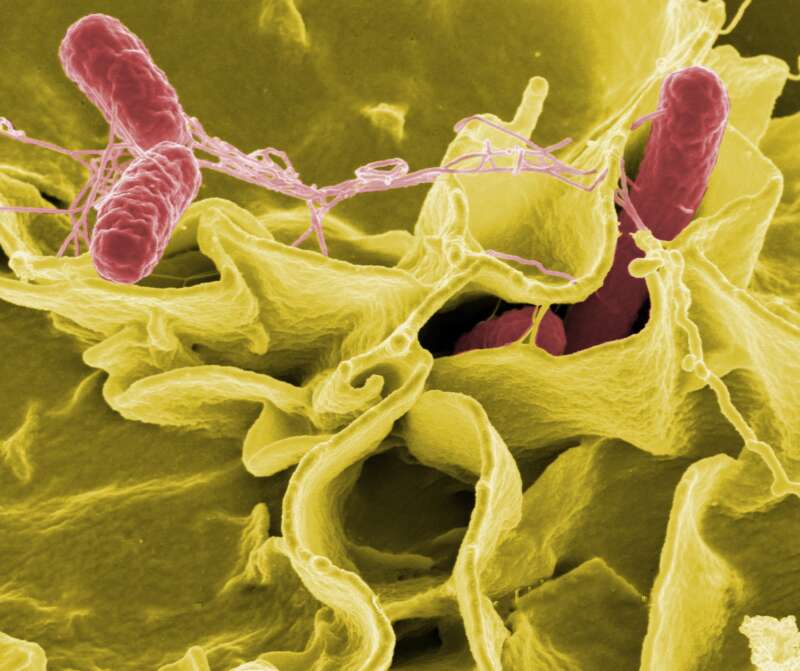
Credit: NIAID
Currently the greatest risk to drinking-water safety is water contaminated with feces (from both human and animal waste). This type of contamination can lead to microbial hazards such as bacteria, viruses and parasites. Many of these cases are thought to go unreported due to a lack of medical test facilities.
Two of the most problematic bacterial diseases are cholera, an infection of the intestine that causes acute diarrhea that kills an estimated 91,00010 a year, and Typhoid that is responsible for as estimated 110,00011 deaths a year. Salmonella and dangerous strains of E. coli can also cause diarrhea or dysentery.
Hepatitis A and polio are diseases caused by viruses that can both be vaccinated against. Polio has been widely eradicated. Hepatitis A is more common in areas where basic levels of healthcare are poor and have low vaccination rates.
Protozoan parasites are identified as the second most frequent cause of mortality among children under five years old. Globally they are responsible for 1.7 billion cases of diarrhea, which leads to 842,000 deaths per year. The most common water-related parasitic infections are cryptosporidiosis and giardiasis.12
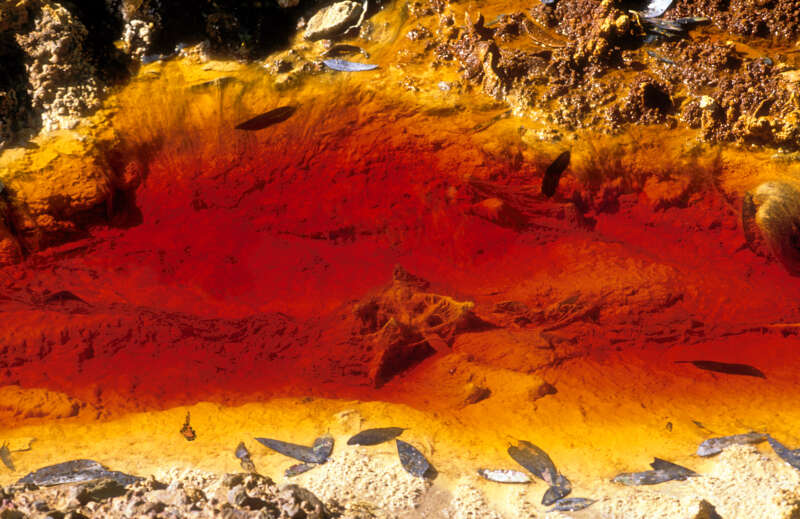
John Coppi, CSIRO
Industrial Pollutants
Harmful chemicals and heavy metals are discharged into the waterways from industrial pollution. Some of the common chemical pollutants include solvents that are used as degreasers, dry cleaning agents and paint removers.
Drinking water contaminated with heavy metals such as arsenic, cadmium, nickel, mercury, chromium, zinc and lead has been linked to chronic and acute toxicity which can lead to kidney failure, cancers, lung and liver damage, and fragile bones.13 The source of heavy metal contamination can be anthropogenic (mining and industrial production) or due to natural activities.
Agricultural Pollutants
Farms discharge large quantities of agrochemicals. Some of the harmful waste discharged into waterways includes pesticides and herbicides, veterinary medicines such as antibiotics, vaccines, fungicides and growth promoters (hormones). Zoonotic waterborne pathogens are another major concern.14
The source of nitrate contamination is often runoff or leakage from fertilized soil, wastewater, landfills, animal feed yards, septic systems or urban drainage. According to the United States Environmental Protection Agency (EPA), high levels of nitrates can cause the blood disorder methemoglobinemia (blue baby syndrome) and have been associated with thyroid dysfunction in children and pregnant women. Moderate deficits in maternal thyroid hormone levels during early pregnancy have been linked to reduced childhood IQ scores and other neurodevelopmental effects, as well as unsuccessful or complicated pregnancies.15 Nitrates also cause toxic algal blooms that can be harmful to people and suffocate waterways.
Manufacturing & Product Waste
The amount of pollution from pharmaceutical products in our waterways and the impact it’s having on the environment is still largely unknown. Medications that we take, leave our bodies and are not always removed in waste treatment plants. Two common pharmaceuticals found are carbamazepine, used to treat epilepsy and nerve pain, and metformin, used to treat type 2 diabetes. Another common pollutant is dissolved human contraceptives which can impact the development and reproduction of fish. Scientists also fear that an increased presence of antibiotics in rivers could limit their effectiveness as medicines in the future.16
The full scope of the health problems associated with microplastic pollution is also not yet fully understood. In 2021, Japanese scientists from Kyushu University estimated 24.4 trillion microplastics are in the world’s upper oceans.17 A 2021 analysis identified more than 10,000 unique chemicals that are used in plastics, of which, more than 2400 are of potential concern18.
Recent studies have found that microplastics do pose a risk to human anatomy. They can latch on to the outer membranes of red blood cells and potentially inhibit their ability to transport oxygen19, and in laboratory tests microplastics have been shown to cause damage to human cells20. It is not known exactly what levels of microplastics are being ingested via drinking water or food connected to waterways, such as seafood, but it is clear that plastic pollution is having a devastating effect on wildlife, especially marine based ecosystems.
Polyfluoroalkyl substances (PFAS) are a diverse group of thousands of chemicals that are used in hundreds of products due to their chemical properties that resist heat, oil, water and grease. For around 80 years they have been widely used in stain and water-resistant fabrics, carpeting, cleaning products, paints, cookware, food packaging and food processing equipment.21 Exposure to some types of PFAS may cause birth defects, damage to the liver and the immune system, and cause an increased risk of kidney or testicular cancer.22
Contributing Factors to Clean Water Shortages Worldwide
Global water shortages are caused by many different factors. One of the UN’s ‘Sustainable Development Goals’ is to ensure safe and affordable access to water and sanitation to the whole global population by 2030.
Data collected between 2000 and 2020 by the WHO and UNICEF Joint Monitoring Programme for Water Supply and Sanitation, illustrates the proportion of each country’s population that are using safely managed drinking water services.23 By 2020, 11 countries including Singapore, Iceland, Hong Kong and Greece, had already reached the goal of 100% of their population having access to clean drinking water. On the other end of the scale, less than 50% of the populations of many African countries are using safely managed drinking water services, with the worst coverage being in Ethiopia (12.58%), Rwanda (12.10%), Central Africa Republic (6.18%) and Chad (5.59%). In order to improve these areas, it is essential to address the lack of infrastructure for water management and address regional stresses.
Importance of Infrastructure
A country or community’s water infrastructure includes both manmade and natural features that move and treat water. These systems can be categorized as: drinking water systems (reservoirs and storage, retrieval from sources and distribution), wastewater management (collection and pipes, pump stations, treatment plants and septic tanks), and stormwater management (collection basins, stormwater pipes, management of runoff).
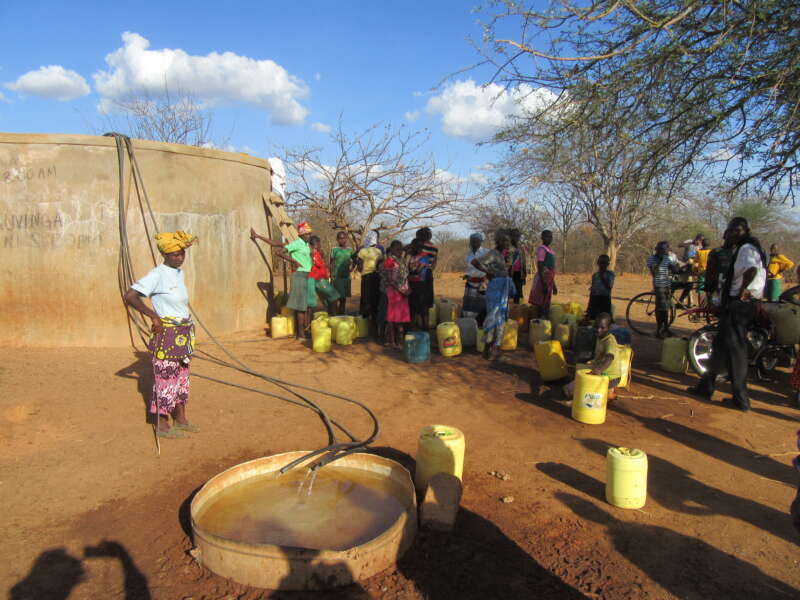
Rob Hope/REACH
One common question is, why are there not more desalination plants to convert seawater into freshwater? The main issue with the process of desalination is that it currently uses 10 times more energy than for any other water source, with a sizable carbon footprint.24 In Spain, many of the desalination plants fell into disuse when farmers refused to pay the high cost of the water they produced25. However, research initiatives such as the EU-funded MIDES26 project, which developed a way to reduce the amount of energy required to treat saltwater by reducing the salinity of the water first by using microbes, may make the process more feasible in the future.
Other key pressures on current infrastructure are natural hazards that can overwhelm systems and cause wide-scale destruction such as earthquakes, landslides, heavy rainfall and storms, hurricanes and flooding. Some regions that once had infrastructures that served the population have become inadequate due to population booms and changes such as rising sea levels.
When there is a lack of effective infrastructure or it fails, communities and independent households are forced to clean and treat water themselves using filters, boiling water and UV treatments. They must also implement a sufficient level of sanitation which relies upon a sufficient level of education, cleaning facilities and products, and access to basic healthcare in order to have vaccinations and medication when required.
Lack of Fresh Water
The factors that contribute to a lack of fresh and clean water range from inefficient usage and mismanagement (in part, due to poor infrastructure), economic, environmental, geopolitical, increased industrial and agricultural demands, pollution and population growth.
As the world’s climate drastically changes, the Food and Agriculture Organization of the UN foresees an increase in drought episodes based on the distribution and varying intensity of droughts at the global or continental level. The 2022 Global Assessment Report delivered by the United Nations Convention to Combat Desertification suggests an average of 60 drought events happen in the world per year27. The report’s findings show that approximately half of the countries around the world do not have adequate early warning systems and that further investment is required in drought risk identification and mapping to ensure economic, social and ecological resilience.
Water shortages also have a high correlation to geopolitics and cause conflicts between neighboring countries.
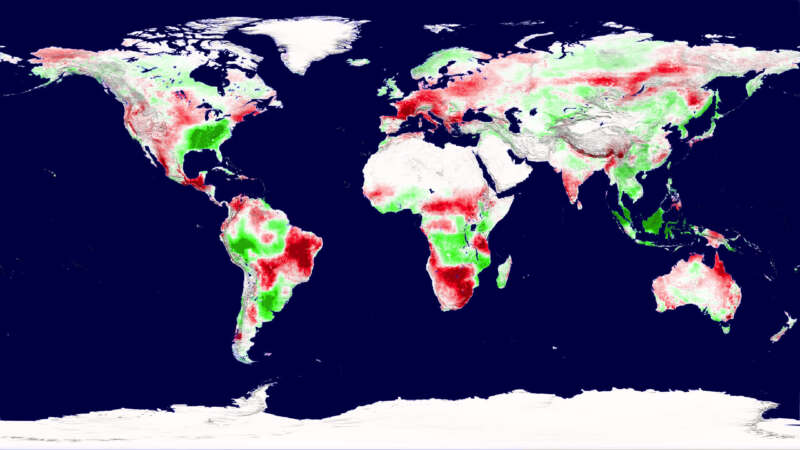
NASA/Goddard Space Flight Center Scientific Visualization Studio
The Nile River supplies Egypt with around 93% of all water resources, however this is under threat by the plans for the Grand Ethiopian Renaissance Dam on the upstream stretch of the Nile. Construction of the dam is set to be finished in 202328. The time in which the dam is filled up has been the main source of the dispute between the countries. If filled up too quickly, the dam could have a catastrophic effect on Egypt’s water levels which will impact their agricultural areas.
As water runs low in certain areas, often in more rural zones, people are forced to migrate to regions with a sufficient supply and access. According to the World Bank, there are more than 1 billion migrants in the world today and water deficits are linked to 10% of the rise in global migration.29 As populations grow, more pressure is put on these areas.
The ownership of water is also at the forefront of many conflicts relating to the use of water, especially when large companies move into rural agricultural spaces and make big profits from the local resources.
International market demands for certain crops have caused drastic changes and stresses on regions where they can be grown. Agricultural booms have been accused of draining water resources in order to grow soybeans in Brazil30, avocados in Chile31 and palm oil producing plantations in Indonesia32. Similarly, companies have been accused of turning vital public water resources into a commodity, in locations all over the world. In each case large, multinational companies with the financial resources have the ability to drill larger and deeper wells and invest more in their water irrigation systems, which leaves local farmers unable to compete. These products are often exported so the resource is removed from the country.
How to Implement Change
In 2015, all UN Member States set a new sustainable development agenda, pledging to achieve 17 development goals by 2030. In order to monitor the success of the endeavor, the Sustainable Development Goals (SDG) Tracker was created. This resource can be used to monitor progress on a global and country level through interactive and up-to-date data visualizations. Having reliable, open-sourced data empowers governments, communities, companies, organizations and individual citizens to implement change.
GlobeScan, a global insights and advisory consultancy, and The SustainAbility Institute by ERM, polled more than 1200 leading international experts in 80 countries about solutions to the global freshwater crisis. The sustainability experts included leaders in business, government, NGOs and academia. The results came up with 19 solutions35 that collectively they believe will improve the future of freshwater.
The solutions can be categorized into a few areas:
Invest in technology and infrastructure to improve: water conservation, irrigation and agricultural practices, recycle waste water, develop energy efficient desalination plants, water catchment and harvesting, and improve distribution.
Make improvements to global cooperation and the environmental impact: develop and enact better policies and regulations, shrink corporate water footprints, holistically manage ecosystems, build international frameworks and institutional cooperation, address pollution, create equal access, climate change mitigation, look to community-based governance and partnerships.
Finally, it will be essential to motivate new behaviors, to educate and influence new consumption lifestyles – from individual usage to the supply chains of major corporations.
The problems facing the world’s water crisis are plentiful. However, here are some case studies that show a range of grass-roots projects and initiatives that have had an inspiring impact.
Case Study 1 – Surfers Against Sewage
30 years ago, a group of UK based watersports enthusiasts formed a group called Surfers Against Sewage. Over the decades they have campaigned for improved quality of the UK’s waterways that they regularly use to practice their sports.
The current conditions have even caused some professional British athletes to relocate to another country. Sarah Jackson, one of the world’s leading windsurfers, told The Guardian at the beginning of 2023 that training in British waters is “not just unpleasant it’s actually health threatening”36. The British sportswoman stated that due to being overwhelmed by the polluting levels of sewage, chemicals and plastic, she has been forced to relocate from her training location in Hayling Island, on the south coast of England, to live and train in the cleaner waters of Tenerife in Spain.
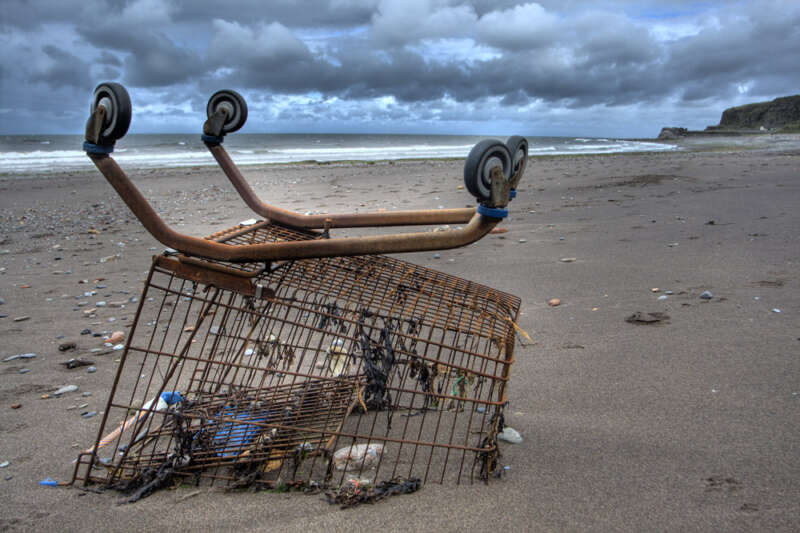
Alan Cleaver
Chichester Harbour Conservancy is the statutory authority for Chichester Harbor and it monitors the quality of the water in the local area that Sarah Jackson trained in. They have undertaken thousands of water quality tests since starting the testing regime in 2007 and produced in-depth analysis of the long-term trends in water quality for 11 of the sites tested. Various pollutants they have detected in the area that would have adverse health effects on bathers including high levels of bacteria, nitrates, chemicals, metals and microplastics.37 They attribute three wastewater treatment plants that discharge untreated sewage directly into the harbor as one of the primary causes of the pollution.
In March 2023, the Environment Agency’s annual report stated that water companies in England made a total of 301,091 sewage spills38 directly into the country’s waterways in 2022. These spills occur during storms to prevent systems from being overwhelmed. The UK government and its regulators have enabled the extent of sewage discharges to be revealed by enforcing more comprehensive monitoring.
Following this report, Rebecca Pow, the UK’s Water Minister said: “The volume of sewage being discharged into our waters is unacceptable and we are taking action to make sure polluters are held to account”…”We have set the strictest targets ever on water companies to reduce sewage discharges, and are requiring them to deliver the largest infrastructure program in their history – an estimated £56 billion in capital investment over the next 25 years, driving more improvements.”
Surfers Against Sewage have released ‘The Safer Seas & Rivers Service’ application that is available for smartphone devices to anyone located within the UK. This pioneering application is the first national, real-time, water quality alert service that informs users when untreated sewage is discharged into waterways and issues pollution alerts when water quality is temporarily reduced at over 370 locations across the UK. The tool empowers citizens to make informed decisions about when they can enjoy the sea and rivers in their local area and protect their health. More importantly, the public can clearly see the scale of the problems their waterways are facing nationwide and the inadequate action being taken by the water companies and government to ensure water safety standards.
Case Study 2 – Patagonia
Clothing production requires a large amount of freshwater. A report by the European Parliament Research Service estimated that the global textile and clothing industry used 79 billion cubic meters of water in 2015. 2700 liters of freshwater are required to make just one T-shirt. This amount is enough to meet one person’s drinking needs for 2.5 years.39
Not only is the industry using vast amounts of freshwater, it’s also polluting waterways. An estimated 20% of global wastewater is caused by dyeing and finishing processes in the fashion industry40. The factories have had a devastating impact on waterways such as the previously mentioned Citarum River in Indonesia.
Garments once they have been purchased still continue to cause pollution. Synthetic fibers such as polyester, nylon and acrylic, have a much lower water-footprint than cotton, but just one load of laundry of these fabrics can discharge 700,000 microplastic fibers into the environment. This has caused more than 14 million tons of microplastics to accumulate on ocean floors.41
This damaging impact has been perpetuated by ‘fast fashion’, a term used to describe the constant provision of new styles at very low prices by mass-market retailers in response to the latest trends. This has created a culture of buying and discarding clothes at a rapid rate with little regard to the environmental impacts.
Although no companies in the manufacturing industry can claim to be completely non-polluting, some have aspired to create more ethical brands as a counterculture to fast fashion.
Over the past 50 years, Patagonia, a company that produces outdoor clothing and gear, has endeavored to have a different type of business model with a mission statement that reads “Build the best product, cause no unnecessary harm, and use business to inspire and implement solutions to the environmental crisis.”42
The company’s vision is to have a more ethical approach in how its products are manufactured and the environmental impact they have on the planet, not just in the location where the products are sold, but along the whole production line. One of the company’s core values is to design products that are useful, versatile, long-lasting, repairable and recyclable.
Over a course of decades, the company has invested in researching and sourcing more ethical raw materials (including cotton and synthetic), various treatments of the materials (such as dying processes), how the products are transported around the world, and finally, once sold, how the company can ensure the longevity of the products through offering a repair service and recycling old products into new.
In addition to this, the company continually monitors and assesses business practices and offers transparency through reports on the business ethics, so not only could the business model be assessed internally, but by external entities. These reports offer up their carbon footprint, details into the materials they use and every step of the manufacturing process.
In 2022, the founder, Yvon Chouinard, transferred the billion-dollar company to a trust that would continue the work and direct profits towards environmental charities to support initiatives, campaigns and improve standards for humans and the environment.43
The European Union wants other companies to take a similar approach. It wants to achieve a circular economy by 205044, moving from the trend of fast fashion, a ‘take-make-dispose’ society, to a carbon-neutral, environmentally sustainable, toxic-free and fully circular economy. In a similar ethos promoted by Patagonia, the EU wants companies to improve product durability, reparability and recyclability and to ensure the uptake of secondary raw materials in new products and reduce textile waste.
A report by the UNESCO Institute for Water Education states that water problems in the major cotton producing areas of the world cannot be solved without addressing the global issue that consumers are not being held responsible for some of the economic costs and ecological impacts, which remain in the producing areas.45
Case Study 3 – Community-based Governance & Partnerships
Marginalized communities that feel unheard have been forced to take action and look for immediate local solutions and find other ways to get the attention of their government and representatives that can influence a change in their water needs.
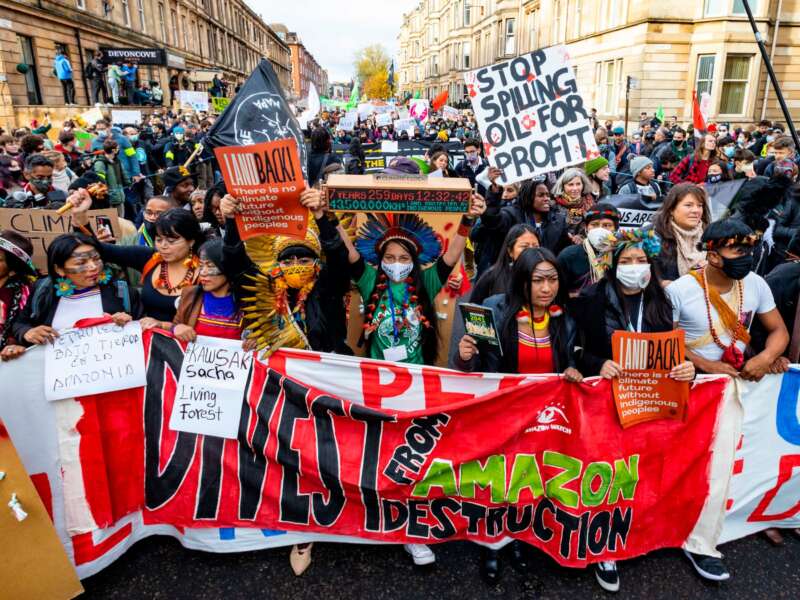
In April 2010, the Alternative Climate Summit was held in Bolivia. The summit was organized by rural Andean communities that claimed the reduction in the glaciers, changes in water flow and weather, have had a big impact on their way of life and ability to survive. At the summit they proposed an international court of environmental justice to adjudicate claims for compensation for communities being affected by climate change. They believed that they should be supported both financially and professionally, in order to adapt to changes brought on by a global crisis.
Alivio Aruquipa, one of the community leaders, told the BBC: “For the past two decades, we, the people from the Andean regions have been suffering because of the greenhouse emissions from the developed countries. If they don’t stop, our glaciers will disappear soon.46“
Around 18,000 people attended the conference to discuss issues that they believe were ignored by the world powers during the UN climate conference held in Copenhagen back in 2009.
Similarly, in 2022, indigenous groups from the Amazonian region of Ecuador, joined forces in their thousands to march to Quito, the capital city. Their demands were to gain economic and social support from President Guillermo Lasso, and to protest the plans to expand Ecuador’s oil and mining industries. A much smaller march took place in 2012 for the ‘Water, Life and Dignity of Indigenous Peoples’, in protest to the approval of a copper mine and ongoing environmental atrocities that they believed were being ignored.
According to protesters, from 1964 to 1990, Texaco, which merged with Chevron in 2001, spilled more than 16 million gallons of crude oil in the Amazon rainforest, polluting the land and waterways. They believe this pollution has led to increases in cancer, miscarriages, skin conditions and birth defects, as well as diminishing their food and clean water supply. They believe it’s not only an environmental crime but a breach of their human rights, a type of cultural genocide47. Highly publicized and complicated lawsuits have ensued48.
Although these issues are far from resolved, the organizing of the communities and partnerships between indigenous groups has led to international recognition through the media and garnered support from the global community. This has aided their ability to fight for justice and the right to survive on their indigenous lands.
*References can be found here.
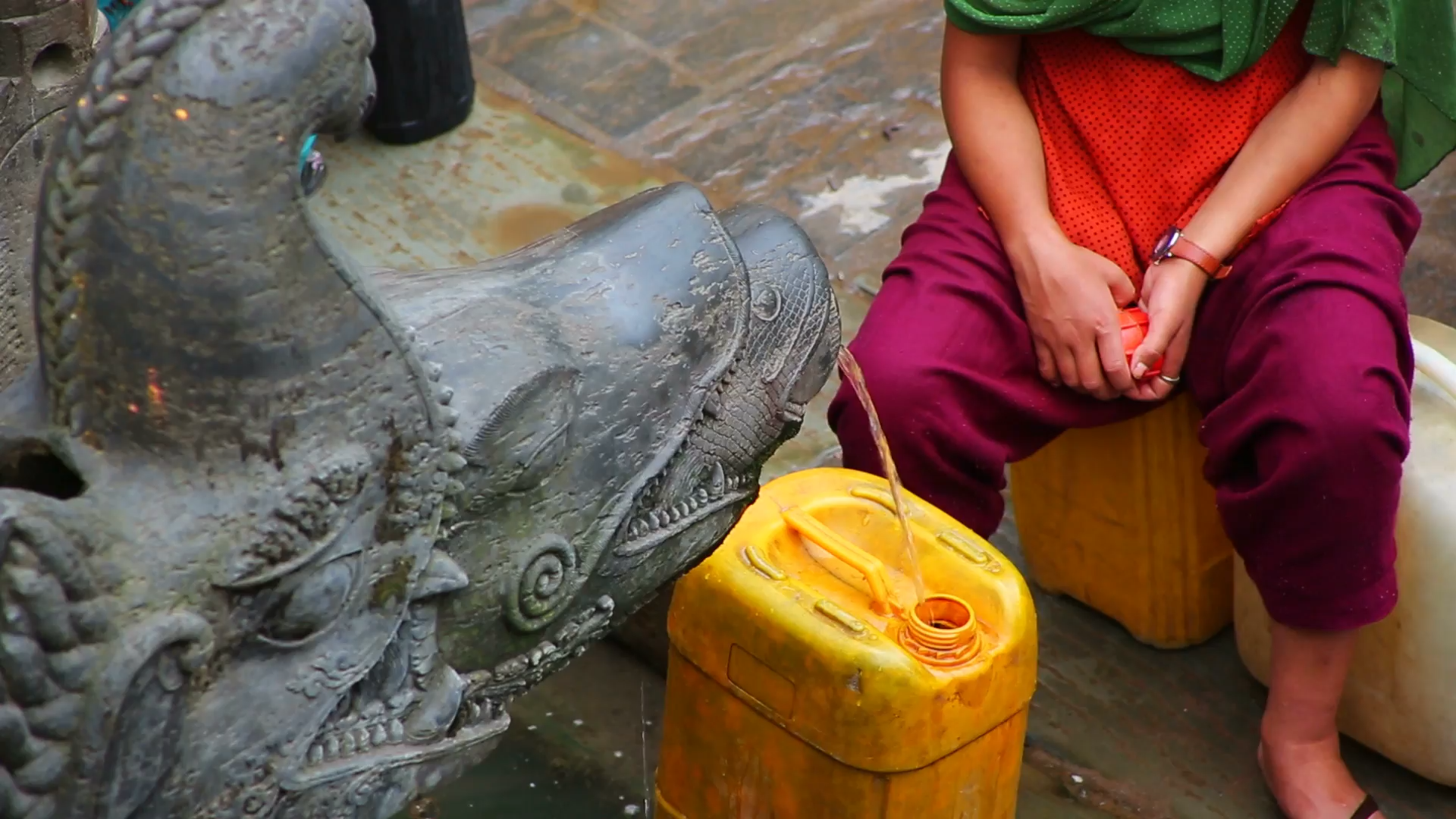
 By
By